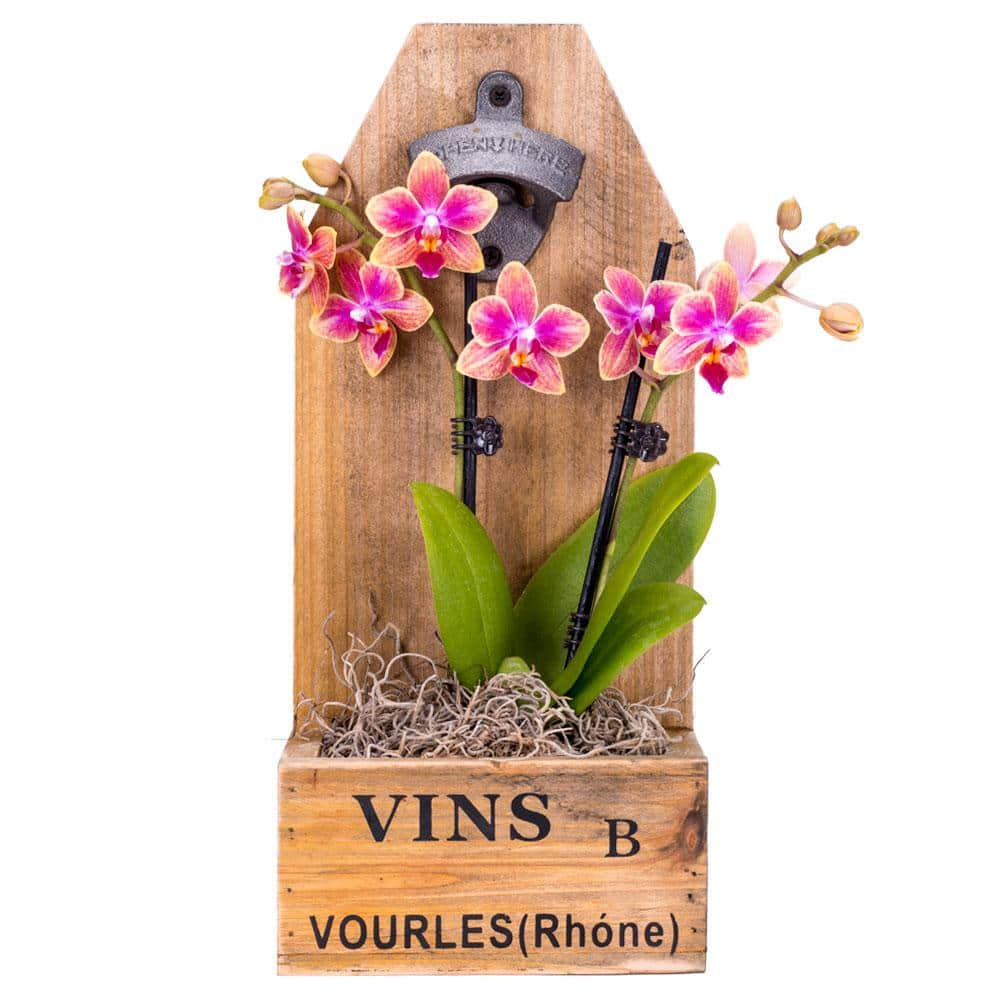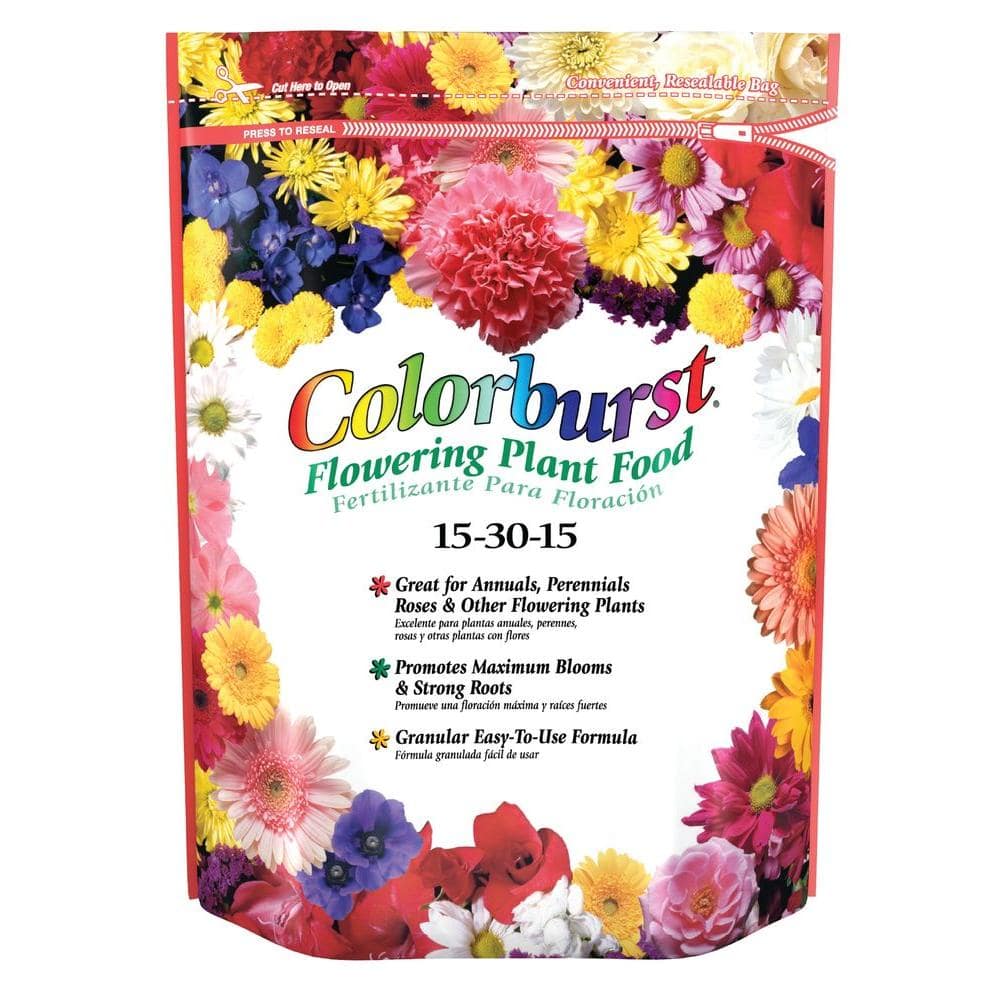Types of Orchids

Last updated April 16, 2025
Orchids are easy to grow. For a flower that blooms for months, these blooming machines need minimal care. The keys to orchid success are right plant, right light and consistent (not constant) care.
The hardest part of growing orchids is choosing which type is right for you, since they are available in a wide range of colors and exotic shapes. Phalaenopsis, also called moth orchids, are easiest to grow at home.
Learn about the types of orchid plants and how to keep orchids happy and blooming for months with these tips.
Table of Contents
Introduction to Orchids
Phalaenopsis (Moth) Orchids
Cattleya Orchids
Cymbidium Orchids
Dendrobium Orchids
Oncidium Orchids
Introduction to Orchids

There are tens of thousands of different types of orchids in the world, but only a few are cultivated as houseplants. Of these many species of orchids, phalaenopsis, or moth orchids, are the easiest to grow as houseplants due to their reasonable sunlight demands. Experts advise that if you can grow African violets, you will be successful with phalaenopsis orchids.
Another houseplant favorite is cattleya, the classic corsage orchid. Its profuse blooms emerge just once a year in spring or fall. Cattleya need about twice the amount of sunlight as moth orchids, and are often content on sunny window sills.
Oncidium orchids are called “dancing ladies” because their blooms look like ladies in skirts. They require bright, diffuse light and temps no higher than 80 degrees Fahrenheit.
Tips for selecting orchids:
- In the Garden Center, choose a plant loaded with flower buds and only a few flowers fully opened. The rest of the buds will open at home, giving you months of color.
- Look for a plant with firm, bright green leaves. And, if you can see them, healthy roots that are not brown or shriveled. Orchids have aerial roots that helped them attach to trees in their native habitat. Healthy aerial roots will be firm and white.
- Don’t leave your new orchid in a hot or cold car between the store and home. A few minutes of excessive temperatures can decrease the flower show.
When you’re researching orchids, pay attention to the variety’s humidity needs. Most homes are not humid enough for orchids. You can resolve this by putting the orchid in a frequently used bathroom with good light. An easier solution is to put the plant pot on a shallow saucer filled with water and pebbles to elevate the pot.
Read on to learn more about the different types of orchid plants.
Phalaenopsis (Moth) Orchids

Experts recommend phalaeonopsis orchids for beginning orchid growers. These low-maintenance orchids have long arching sprays of colorful, long-lasting flowers that stay fresh for up to several months and bloom in winter and early spring. They're also called moth orchids because of the attractive moth-shaped (some say butterfly-shaped) blooms. The wide color range includes shades of pink, purple, apricot, orange, salmon, lemon yellow and pure white.
- Light requirements: Moderate to low light.
- Watering frequency: About once a week, when soil feels dry to the touch.
- Humidity levels: 55 to 75 percent.
- Temperature range: 65 to 75 degrees Fahrenheit.
Cattleya Orchids

Cattleya orchids are often called corsage orchids. If you’ve ever been to a prom, you’ll recognize the large, colorful blooms of a cattleya orchid. As houseplants, they need more light than other types of orchids.
- Light requirements: Bright, indirect light.
- Watering frequency: Water when soil is dry.
- Humidity levels: 50 to 80 percent.
- Temperature range: 60 to 85 degrees Fahrenheit.
Cymbidium Orchids

Cymbidium orchids produce spikes of flowers. They’re known for tolerating cool temps more than other types of orchids.
- Light requirements: Bright, indirect light.
- Watering frequency: Water when soil is dry, about once a week.
- Humidity levels: 40 to 60 percent.
- Temperature range: 50 to 90 degrees Fahrenheit.
Dendrobium Orchids

Dendrobium orchids are like moth orchids, but they tolerate a cooler and less humid growing environment. While moth orchids bloom up to three months, dendrobium blooms last about six weeks.
- Light requirements: Bright, indirect light.
- Watering frequency: When soil is dry to the touch, about once a week.
- Humidity levels: 50 to 70 percent.
- Temperature range: 60 to 85 degrees Fahrenheit.
Oncidium Orchids

Dancing lady orchids is the common name for oncidium orchids. These lively plants present delicate flowers along arching stems. They require more attention to humidity than other common orchids.
- Light requirements: Bright, indirect light.
- Humidity levels: 40 to 60 percent.
- Temperature range: 55 to 85 degrees Fahrenheit.
More Types of Orchids

Out of the 28,000 types of orchids in the world, only about two dozen are commonly grown as houseplants. Here are a few different types of orchids you may know about or encounter as you learn more about growing orchids:
- Vanda orchids have vibrant flowers and require bright light and high humidity.
- Vanilla planifolia is a vining orchid that produces fragrant vanilla beans.
- Paphiopedilum have slipper-shaped flowers and prefer cool temps.
- Brassavolo are easy-care orchids that release a sweet fragrance at night.
- Catasetum can be challenging to grow. The growth cycle includes a dormant period where they require absolutely no water.
Growing Orchids as Houseplants

When you bring your orchid home, place the pot in bright indirect light. Cool morning sun is best, so choose an east- or north-facing window, if possible. Supplement natural light with grow lights. A mix of both types of light increases blooms. If your weather is snowy or icy, move orchids away from the window so they don’t catch a chill.
The best varieties of orchids for low indoor light conditions are oncidium, phalaenopsis and paphiopedilum.
Most orchids are planted using the double-pot system. The orchid is planted in a plastic pot with drainage holes and nested in a more decorative one, called a cachepot.
You may also find terra cotta or ceramic orchid pots that have holes in the sides for the aerial roots to emerge. No matter what kind of planter material you choose, the planter must have drainage holes.
Depending on your orchids’ health, consider repotting every one to two years. When repotting, only choose a pot that is one to two inches wider and plant in an appropriate medium.
Orchids are considered dog-safe and cat-safe and overall pet-friendly plants.
Orchid Care and Maintenance

Orchids have aerial roots that soak up nutrients from the air. Healthy aerial roots are silvery white and plump. If the roots of your plant are shriveled or show decay, you can trim them, but wait until the plant is dormant and not blooming. Use sharp garden scissors to trim your plant and be sure to sterilize your tools with an alcohol wipe to prevent the spread of any plant disease.
Orchids need potting material that drains quickly while still retaining moisture. Choose from an organic potting soil or a combination of bark, moss and gravel.
For plant food and fertilizer, choose a water-soluble fertilizer designed especially for orchids. Most orchids need to be fed once every three to four weeks. After flowering, reduce watering and feeding until new leaf production begins again. Once new leaves emerge, resume the full schedule of watering and feeding.
Orchids need humidity in the 40 to 70 percent range. This is much more humid than the average home. The humidity requirement can usually be found in a bathroom with a sunny window. You can also place orchid pots on a tray filled with rocks or gravel that is then filled with water. On the down side, humidity can lead to mildew problems, so be sure to provide plenty of air circulation.
If you think orchids may be your new hobby, invest in an ultrasonic humidifier. Orchids have periods of dormancy that can last up to nine months. Make sure the plant is adequately fed and watered (not too much, not too little) and receiving enough sunlight. Orchids like indoor temperatures between 65 and 80 degrees Fahrenheit.
Encourage your orchid to bloom again by moving the plant to a room with nighttime temperatures between 55- and 65-degrees Fahrenheit until a new flower spike emerges. Return the plant to its original location and continue watering regularly.
Varieties of orchids can be affected by common houseplants pests like aphids, mealybugs, scale and spider mites. Make a habit of routinely inspecting your orchid plants, especially the undersides of leaves, and treat insects before they become big problems. Neem oil is an organic treatment that can help eliminate insect pests on houseplants.
Orchid Display and Arrangement

Take advantage of orchids' beautiful colors and dramatic blooms and use them as decor throughout your home.
- Cluster coordinating pots of orchids on coffee tables, in entryways, and on dining room tables. The most eye-pleasing collections are grouped in odd numbers like 3 and 5.
- Group varieties of orchids together in similar fashion. By coordinating the planters, for example, white or neutral metal containers, you'll let the flowers shine.
- Use small orchids in teeny pots as favors with each place setting in a celebratory tablescape.
- Orchids can be used as cut flowers, too. Trim the stems and place in vases.
- Make vertical gardens with your orchids when you hang them in small containers in a window.
- Use a shower caddy in a bathroom to hold small orchid vases. The steamy shower will help keep orchids moist.
Orchids bring beauty and serenity into your home. When you're ready to purchase orchids and orchid growing supplies, go to The Home Depot Mobile App to locate products and check inventory.































